#aviation digital transformation
Explore tagged Tumblr posts
Text
Digi Yatra Expands to Nine More Airports with Inauguration in Ranchi
Union Minister Kinjarapu Ram Mohan Naidu to launch Digi Yatra at Ranchi’s Birsa Munda Airport via video conference, enhancing travel efficiency. The Digi Yatra Facility, a transformative technology in Indian aviation, expands to nine new airports, including Ranchi, offering a seamless and contactless experience. RANCHI – The Ministry of Civil Aviation is set to launch the Digi Yatra Facility at…
#aviation digital transformation#राज्य#Birsa Munda Airport Ranchi#contactless airport services#Digi Yatra expansion#Indian aviation technology#Murlidhar Mohol video conference#passenger security India#seamless travel experience#Shri Ram Mohan Naidu Kinjarapu#state#Visakhapatnam airport
0 notes
Text
Think tank calls for AI incident reporting system
New Post has been published on https://thedigitalinsider.com/think-tank-calls-for-ai-incident-reporting-system/
Think tank calls for AI incident reporting system
.pp-multiple-authors-boxes-wrapper display:none; img width:100%;
The Centre for Long-Term Resilience (CLTR) has called for a comprehensive incident reporting system to urgently address a critical gap in AI regulation plans.
According to the CLTR, AI has a history of failing in unexpected ways, with over 10,000 safety incidents recorded by news outlets in deployed AI systems since 2014. As AI becomes more integrated into society, the frequency and impact of these incidents are likely to increase.
The think tank argues that a well-functioning incident reporting regime is essential for effective AI regulation, drawing parallels with safety-critical industries such as aviation and medicine. This view is supported by a broad consensus of experts, as well as the US and Chinese governments and the European Union.
The report outlines three key benefits of implementing an incident reporting system:
Monitoring real-world AI safety risks to inform regulatory adjustments
Coordinating rapid responses to major incidents and investigating root causes
Identifying early warnings of potential large-scale future harms
Currently, the UK’s AI regulation lacks an effective incident reporting framework. This gap leaves the Department for Science, Innovation & Technology (DSIT) without visibility on various critical incidents, including:
Issues with highly capable foundation models
Incidents from the UK Government’s own AI use in public services
Misuse of AI systems for malicious purposes
Harms caused by AI companions, tutors, and therapists
The CLTR warns that without a proper incident reporting system, DSIT may learn about novel harms through news outlets rather than through established reporting processes.
To address this gap, the think tank recommends three immediate steps for the UK Government:
Government incident reporting system: Establish a system for reporting incidents from AI used in public services. This can be a straightforward extension of the Algorithmic Transparency Recording Standard (ATRS) to include public sector AI incidents, feeding into a government body and potentially shared with the public for transparency.
Engage regulators and experts: Commission regulators and consult with experts to identify the most concerning gaps, ensuring effective coverage of priority incidents and understanding stakeholder needs for a functional regime.
Build DSIT capacity: Develop DSIT’s capability to monitor, investigate, and respond to incidents, potentially through a pilot AI incident database. This would form part of DSIT’s central function, initially focusing on the most urgent gaps but eventually expanding to include all reports from UK regulators.
These recommendations aim to enhance the government’s ability to responsibly improve public services, ensure effective coverage of priority incidents, and develop the necessary infrastructure for collecting and responding to AI incident reports.
Veera Siivonen, CCO and Partner at Saidot, commented:
“This report by the Centre for Long-Term Resilience comes at the opportune moment. As the UK hurtles towards a General Election, the next government’s AI policy will be the cornerstone for economic growth. However, this requires precision in navigating the balance between regulation and innovation, providing guardrails without narrowing the industry’s potential for experimentation. While implementing a centralised incident reporting system for AI misuse and malfunctions would be a laudable first step, there are many more steps to climb.
The incoming UK government should provide certainty and understanding for enterprises with clear governance requirements, while monitoring and mitigating the most likely risks. By integrating a variety of AI governance strategies with centralised incident reporting, the UK can harness the economic potential of AI, ensuring that it benefits society while protecting democratic processes and public trust.”
As AI continues to advance and permeate various aspects of society, the implementation of a robust incident reporting system could prove crucial in mitigating risks and ensuring the safe development and deployment of AI technologies.
See also: SoftBank chief: Forget AGI, ASI will be here within 10 years
Want to learn more about AI and big data from industry leaders? Check out AI & Big Data Expo taking place in Amsterdam, California, and London. The comprehensive event is co-located with other leading events including Intelligent Automation Conference, BlockX, Digital Transformation Week, and Cyber Security & Cloud Expo.
Explore other upcoming enterprise technology events and webinars powered by TechForge here.
Tags: ai, artificial intelligence, Centre for Long-Term Resilience, cltr, ethics, government, legal, regulation, safety, Society
#000#AGI#ai#ai & big data expo#AI regulation#ai safety#AI systems#algorithmic transparency#amp#Articles#artificial#Artificial Intelligence#asi#automation#aviation#Big Data#Centre for Long-Term Resilience#Cloud#cltr#comprehensive#conference#cyber#cyber security#data#Database#democratic#deployment#development#Digital Transformation#economic
0 notes
Text

Embrace the power of Artificial Intelligence (AI) and Machine Learning (ML) with our cutting-edge solutions. Revolutionize your business operations, drive informed decision-making, and stay ahead in the digital age. Our AI and ML solutions offer advanced analytics, automation, and personalized insights, empowering you to achieve remarkable efficiency and innovation.
#big data in aviation#AI and ML solutions#player support services#digital commerce solution#conversational automation#customer experience transformation#digital data and analytics#Customer Loyalty Management
1 note
·
View note
Photo



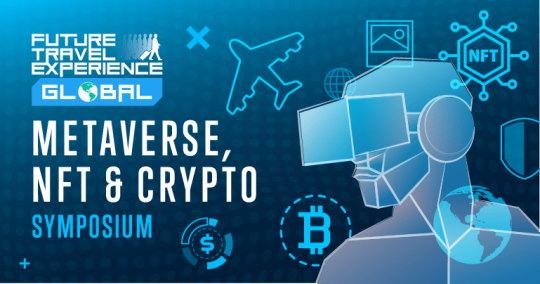

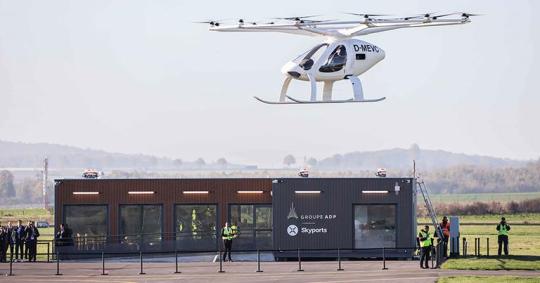


10 technology trends that can enhance airline and airport operations in 2023.
FTE explores a selection of the top trends and technologies for 2023 and beyond, including automation, robotics, the metaverse, Urban Air Mobility, digital identity and more.
#aviation news#aviation#travel technology#tech news#tech trends#ancillary#biometrics#digital transformation#mobility#ontheground#on the ground#up in the air#upintheair#futuretravelexperience
0 notes
Text
Miss Conenginality, No. 1 - Boeing 377 Stratocruiser
Very recently I was asked what my favorite planes visually are, and I said that I would do a series of posts on the matter for each like the original post received. A lot of people close to me probably had an idea in mind as to what my first post would be, and I'm going to intentionally not give them what they expect.
Today's featured model is a blast from the past, the Boeing 377 Stratocruiser!
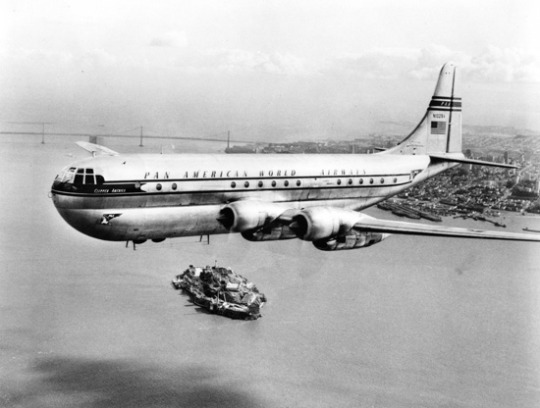
Image: San Diego Air & Space Museum Archives
Serving for just over a decade (1949-1963), the Stratocruiser was a member of that weird generation between the flying boat era and the introduction of turboprops and early jets, contemporary to the early Constellation models and the DC-6. For the day it was a pretty advanced design - it had to be, to compete with the two aforementioned giants. It had a pressurized cabin and impressive range but most notably it was a literal giant with its two passenger decks and triple-digit passenger of capacity, and was Pan Am's choice to replace the luxury overseas transport offered by their old Boeing 314 flying boats - they placed the most expensive order in history at the time, for 20 planes. In a very early example of the US government deciding Boeing was their favorite, mail routes flown by Stratocruisers were heavily subsidized for Pan Am and Northwest.
Sounds great! Only problem is that nobody can afford to operate it and the propellers fall off and overspeed whenever they feel like it. Nearly a quarter of the 56 examples built were destroyed in accidents and Boeing lost seven million dollars (in 1950s money).
But this blog isn't about those sorts of things. We Eat Babies Airlines can get a good rating if it has a good livery and the Christmas Bullet could get a feature if I liked how it looked. And can we talk about how the Stratocruiser looks like a plane dressed up as a blimp?

Those wings look way too skinny to lift her! Physics is truly incredible. Look how big those nacelles are compared to the wings! What is this thing! Image: San Diego Air & Space Museum Archives
How did we get here? Why did they design it to look like this? Well, it's actually a bit of a story. We did not start out here. We started out with the B-29 Superfortress, a decidedly normal-looking WWII-era bomber probably best known for the whole...nuclear bombs thing. We then added a second lobe (and some other modifications) for the C-97 Stratofreighter. And then the war ended and, as was not especially uncommon back then, the decision was made to develop an airliner variant of what had been a military cargo plane, and the Stratocruiser was born.

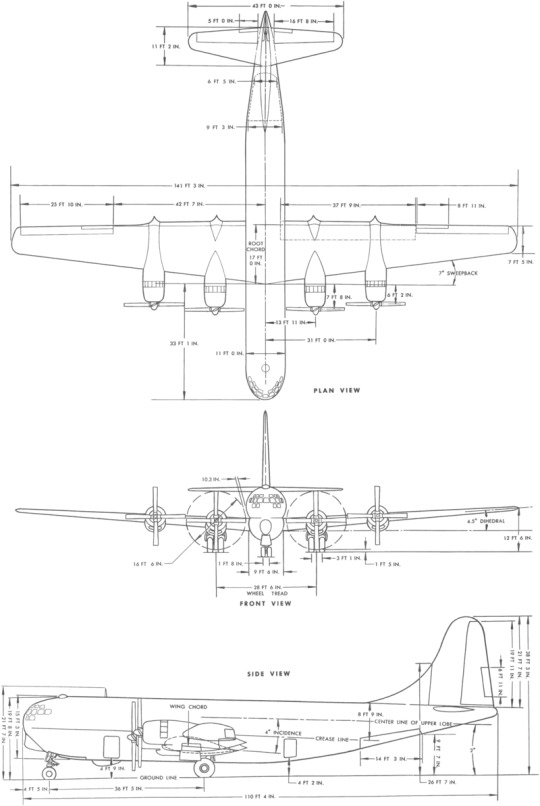
You can really see the transformation into an aerostat taking place.
I do think it really shows that this was a development of a more normal airframe, but I think that almost makes it even more charming. The Stratocruiser is a strange plane, a very large bumblebee made of metal and held together with dollar bills and chewing gum.
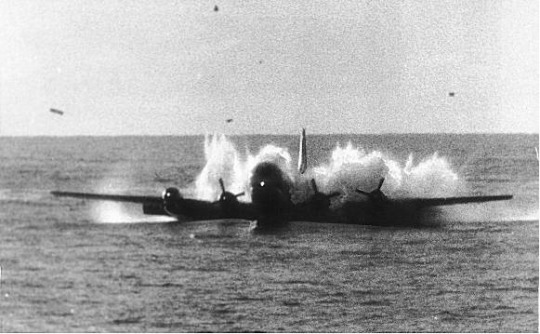
Image: William Simpson/US Coast Guard
Here's one being successfully ditched (as Pan Am flight 6), because why not!
And, thankfully, the world of aviation wasn't content to stop there. As aircraft grew in size and the space race began in earnest there arose a need for excessively large freighters. Today you may be familiar with the Airbus Beluga and Boeing Dreamlifter, but you may be a little less familiar with NASA's outsize cargo aircraft, used to carry full rocket stages. The only Stratocruiser-derived aircraft still in service: NASA's Aero Spacelines Super Guppy.
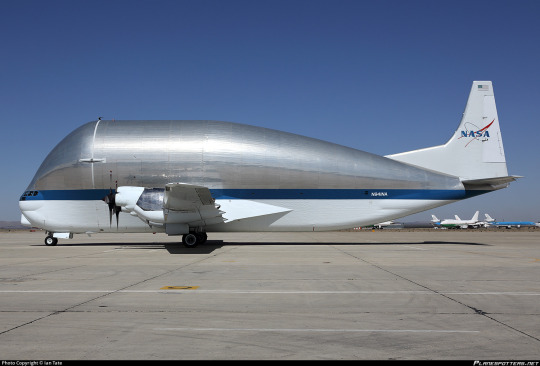
Yes, this feels like the end stage of the Stratocruiser's evolutionary line. This is correct. I love her, and I hope you all do too.
The Stratocruiser is a strange curiosity for sure, an odd-looking relic of a long-bygone era...and so irresistibly silly that I can't help but love it.
youtube
82 notes
·
View notes
Text
State of Grace
Chapter XXXI

Excerpt:
Audrey finished tucking the remaining change into her wallet, fingers gliding over the rest of the money she had when she heard a slightly familiar voice call out somewhere behind them. “Mr. Heyward, Mr. Routledge, Mr. Maybank, Ms. Routledge,” Audrey zipped her wristlet closed, turning her head to see her former history teacher, Mr. Sunn, standing a few cars away, one hand resting on the trunk of the blue sedan he drove while the other gripped the handle of his grocery bag, “nice to see you all.”
“Mr. Sunn,” John B lifted his hand, “nice to see you.”
“Likewise,” Mr. Sun popped his trunk open before placing his grocery bag inside, “I’m actually happy I ran into you all out here—I was going to wait until school started up next week, but now that I have you here…”
The boys and Audrey exchanged glances after they placed their own bags inside the Twinkie, “Mr. Sun—it’s a little early for us to be getting into trouble already,” JJ grunted, moving to lean against the Twinkie beside Audrey.
“No trouble,” Mr. Sun’s dreadlocks bounced as he popped up over his trunk, “I actually have a question of a historical nature for you.”
“A question?” Pope asked, taking a step closer to their teacher and his car, “I’m not sure we’re who you need to help answer it.”
“I disagree wholeheartedly,” Mr. Sunn smiled at Pope, “I digitize documents down for the Maritime Museum in my freetime, and in return, I’ve been given access to the archives.”
“Congratulations?” JJ only shrugged, pulling down his black aviators to cover his eyes, moving to lean his elbow on Audrey’s shoulder.
“Thank you, Mr. Maybank,” Mr. Sunn ignored JJ’s sarcasm, rolling with the comments as he pulled out a large gray looking box from the trunk, “but while I was looking through the documents, I found something.”
“A box?”
“More than a box, Mr. Heyward,” Mr. Sunn walked around his car until he reached the hood, placing the box down on top of it. It was only a few seconds later that Mr. Sunn pulled the top off the box and motioned for Pope to take a closer look. “Careful now.”
Audrey, JJ, and John B crowded behind Pope, watching their friend pick up the covered object before tugging the protective sleeve off of it. Audrey felt her stomach sink at the sight of a very old looking diary, her lips pressing to a thin line at having yet another diary given to them. “The author is unknown,” Mr. Sunn explained, leaning on the opposite side of the hood as he watched Pope’s face closely. Pope untied the leather string before gently opening the old thing up, everyone freezing at the sight of the bundle of wheat on the first page.
“Holy shit,” John B exhaled quietly.
#jj maybank fanfiction#jj maybank x oc#jj maybank#outer banks fanfiction#jj maybank fluff#jj maybank x routledge!reader#jj maybank smut#obx season 2#outer banks season 2
13 notes
·
View notes
Note
Aww positivity night is my favorite, 🥹! For the positivity Friday I want to send some love to some of my favorite authors and people here💞:
@roosterforme :
- Even though I have already said it many times I will repeat it forever, I really like her ability to insert small details into her stories and continue to use them throughout the rest of the story. I also love the care she takes in describing scenes that apparently seem normal and yet she manages to transform them into wonderful ones by adding small actions or gestures that make them unique. Without forgetting her skill in characterizing the characters, who are written so well that you fall in love with them from the first words and the precision she puts into writing about Bradley, differently depending on the series but always in a way that is impossible do not fall in love with him. I literally love her entire masterlist, Is It Working For You and the entire Bradley and BG universe was the first series I read by her and it has a special place in my heart, I love reading it and rereading it. She is truly amazing!
@bradshawsbaby :
- I've said it plenty of times about her too, but her skill in transporting the reader precisely to the place where the story is taking place always leaves me speechless. The precision with which she takes care of every detail of the environment is truly special and fascinates me every time. Si Vis Amari Ama is the series thanks to which I discovered her blog and I am madly in love with it. One thing I really appreciate about this series is the fact that she included phrases or words in Latin, this once again confirms the passion and care that she put into her works. As well as it is written, every time I'm in Rome I feel like I've been catapulted into the series! I also find her talent in making the relationships between characters real and her artistic sense when she makes mood boards incredible.
@beyondthesefourwalls :
- The first series of her that I read was Remember you even when I don't and I read it in one go because it had captivated me from the beginning. Her ability to write and make you feel the emotions of the characters is fantastic. I love how in her stories it's like riding a roller coaster for everything you feel and I love even more how in many of her stories she talks and underlines how certain loves never end, no matter what they have to face, they often go through immense turns and then return. This love came back to me is the perfect proof, which made me shed more than one tear and which I loved immensely.
@notroosterbradshaw :
- I madly loved her series The boyfriend experience, the slow burn that occurred between the characters, how they understood that they had feelings for each other and how they let themselves go and got together. I love how she can write about happy feelings as well as sadder feelings. With Slow Dancing in a Burning Room my heart is strained with every chapter, but I can't help but read the series because of how well it is written and how real the situations and conversations between the various characters are.
@mamachasesmayhem
- I recently discovered her Honey and Jake universe and fell in love with it after reading the first few lines. I love her ability to create stories not only by writing them beautifully but also by building the entire outline. With the presentation of the various main characters, inserting photos of them as she imagined them, writing their background and their nicknames. Not to mention the various mood boards that she creates and the various digital Daggers that always manage to make me smile and are so carefully done.
@sailor-aviator :
- And last but not least, you! I discovered your blog by chance while seeing the Fool’s Fare prologue. And inside I thought "wow a series about pirates with Jake as the protagonist must be interesting" so I read the prologue and to say that it literally enchanted me would be an understatement. I love your skill in describing the entrances and introductions of the characters as well as how you manage to bring the reader even further into the story thanks to the drabbles you write, making known various details and different points of view, and also thanks to the research that you do and share about clothes or jewels, to name a few, that you then talk about in the story. As I already told you, right now I'm literally obsessed with your new series Stranger like me, I love the idea and how you're developing it is really beautiful!
You are all extremely talented, sweet and kind! Reading your stories and interacting with you is always a pleasure! I truly appreciate the passion, love and time you all dedicate to your work and for this I can never thank you enough! 💌🫶🏼✨
Fabiola, I don’t think positivity night would be complete without giving you a shoutout too! I love reading every comment you leave on my works, and it makes my day so much brighter!! Thank you for reading everything and taking the time to leave the comments that you do!!
11 notes
·
View notes
Text
Thailand SMART Visa
Thailand's ambition to transform its economy into a high-tech hub has led to the creation of the SMART Visa program. Launched in 2020, this visa aims to attract skilled professionals, investors, and entrepreneurs across ten targeted industries deemed crucial for the nation's growth. Let's delve deeper into the intricacies of the SMART Visa program and explore its various facets.
Tailored Categories for Specific Needs
The SMART Visa caters to a diverse range of individuals by offering four distinct categories:
SMART Talent (T) Visa: This category targets highly skilled professionals with expertise in fields like robotics, aviation, and digital technology. Applicants must possess a minimum monthly salary of 100,000 baht (approximately $3,000 USD) and have their work experience endorsed by a relevant government agency within the Strategic Talent Center (STC) network. This visa offers a maximum four-year stay with the possibility of renewal.
SMART Business (B) Visa: This category focuses on attracting business executives and investors. Applicants can qualify by demonstrating a minimum investment in a Thai company or a minimum annual income derived from overseas. Unlike the T visa, the B visa doesn't require specific industry expertise but offers a shorter maximum stay of two years, also renewable.
SMART Startup (S) Visa: This visa is ideal for entrepreneurs seeking to establish or join a startup in Thailand. Applicants can qualify by having a stake in a registered Thai startup or participating in an approved accelerator or incubator program. The S visa offers flexible stay durations of 6 months, 1 year, or 2 years, depending on the specific circumstances.
SMART Family (F) Visa: Spouses and children of SMART Visa holders can apply for the F visa, allowing them to accompany the main visa holder and reside in Thailand for the duration of the primary visa's validity. This eliminates the need for dependents to obtain separate visas, simplifying the relocation process.
Beyond Long Stays: Unveiling the SMART Visa Advantage
The SMART Visa goes beyond just offering extended stays. Here's a breakdown of some of its key benefits:
Fast-Track Immigration: SMART Visa holders benefit from expedited immigration services at designated Thai airports, saving valuable time upon arrival.
Work Permit Exemption: The T visa and, in some cases, the B visa exempt holders from the need to obtain a separate work permit, streamlining the employment process. Spouses with F visas may also be eligible to work without a separate work permit.
Tax Incentives: SMART Visa holders in certain categories might be eligible for tax benefits such as reduced personal income tax rates or exemptions on imported equipment for business ventures.
Multiple Re-Entry: Unlike some Thai visas, the SMART Visa allows for multiple entries and exits throughout its validity period, offering greater travel flexibility.
Eligibility Nuances and the Application Process
The eligibility requirements for each SMART Visa category can be nuanced. It's crucial to consult with a Thai immigration lawyer to determine the most suitable category and ensure you meet all the specific criteria. Here's a simplified overview of the application process:
Category Selection: Identify the SMART Visa category that best aligns with your goals and qualifications (Talent, Business, Startup, or Family).
Documentation Gathering: Compile the necessary documents as per your chosen category, which may include academic certificates, employment contracts, business plans, or financial statements.
Endorsement (if applicable): For the T visa, endorsement from a relevant STC agency is mandatory. This involves submitting your application and qualifications to the designated agency for review and approval.
Application Submission: Applications are typically submitted through the Thailand Board of Investment (BOI) or a designated embassy or consulate.
The Legal Landscape: Considerations and Potential Challenges
While the SMART Visa program offers exciting prospects, some factors require careful consideration:
Industry Specificity: The T visa's focus on targeted industries might exclude skilled professionals in other sectors.
Work Permit Exemptions: The work permit exemption associated with certain SMART Visas might not apply to all job roles within a company. Consulting with an immigration lawyer is crucial to navigate this complexity.
Evolving Regulations: The SMART Visa program is relatively new, and regulations might evolve over time. Staying updated with the latest requirements is essential.
Conclusion
The SMART Visa program presents a compelling opportunity for skilled professionals, entrepreneurs, and their families seeking to establish themselves in Thailand's dynamic economy. By understanding the intricacies of each category, its benefits, and the application process, individuals can leverage this program to chart a successful course in the Land of Smiles. Remember, seeking expert legal advice can ensure a smooth application process and maximize your chances of securing a SMART Visa.
#immigration in thailand#immigration lawyers in thailand#thailand#thailand smart visa#smart visa in thailand#lawyers in thailand
2 notes
·
View notes
Text
Thailand Board of Investment
The Thailand Board of Investment (BOI), established in 1966, stands as a cornerstone institution promoting foreign direct investment (FDI) in Thailand. It plays a pivotal role in propelling the nation's economic growth and diversification by offering a plethora of incentives and streamlining the investment process. This article delves into the intricacies of the BOI, exploring its objectives, investment promotion strategies, and the advantages it offers to foreign investors.
Guiding Principles: The BOI's Vision and Mission
The BOI operates under the purview of the Office of the Prime Minister, highlighting its significance within the Thai government's economic development agenda. Here's a closer look at the driving forces behind the BOI:
Vision: To transform Thailand into a globally competitive and innovation-driven economy, fostering balanced and sustainable growth.
Mission: To attract high-quality foreign investments that contribute to technological advancement, knowledge transfer, and job creation in Thailand.
Strategic Arsenal: The BOI's Toolbox for Investors
The BOI employs a multi-pronged approach to incentivize foreign investment. Here are some of the key offerings that make Thailand an attractive investment destination:
Tax Incentives: Corporate income tax exemptions or reductions, import duty exemptions on machinery, and exemption from import duties on raw materials for export production are some of the tax benefits offered.
Investment Allowance: Companies can deduct a portion of their investment costs from their taxable income over a specified period.
Land Leasehold Rights: Foreigners can be granted extended leasehold rights for land plots under specific BOI-promoted activities.
Simplified Business Registration: The BOI facilitates a faster and smoother business registration process for promoted companies.
One-Stop Service: The BOI acts as a central point of contact, providing guidance and assistance to investors throughout the investment process.
Tailored Assistance: BOI's Promotion Sectors and Activities
The BOI prioritizes specific sectors and activities deemed crucial for Thailand's economic development. These sectors are categorized into clusters, each with its own set of promotional strategies and incentives. Some of the key focus areas include:
Advanced Technologies: The BOI actively promotes investments in industries like robotics, artificial intelligence, and digital technology.
Future Industries: Sectors like bioeconomy, medical and wellness services, and aviation and logistics receive significant support from the BOI.
Targeted Industries: The BOI offers incentives for investments in targeted industries like automotive, electronics, and food processing, which contribute significantly to Thailand's export sector.
Beyond Incentives: Additional Advantages of BOI Promotion
While the financial perks are substantial, BOI promotion offers a range of additional benefits:
Enhanced Credibility: BOI-promoted companies gain a mark of recognition from the Thai government, potentially boosting investor confidence.
Streamlined Bureaucracy: The BOI assists in navigating complex regulations and obtaining necessary permits, saving investors time and resources.
Access to Networks: The BOI connects investors with potential business partners, suppliers, and research institutions within Thailand.
Eligibility and Application Process: Demystifying BOI Promotion
Not all foreign investments qualify for BOI promotion. Here's a breakdown of the eligibility criteria and the application process:
Eligibility: Companies involved in activities aligned with the BOI's promotional sectors, demonstrating potential for technology transfer, job creation, and export generation, are most likely to be considered.
Application Process: Investors submit detailed proposals outlining their business plans, projected investments, and anticipated contributions to the Thai economy. The BOI thoroughly evaluates each proposal before making a decision.
A Look Ahead: The BOI's Role in Thailand's Future
As Thailand strives to navigate a dynamic global economic landscape, the BOI's role remains crucial. By continuously refining its promotional strategies, attracting high-value investments in cutting-edge sectors, and fostering a supportive business environment, the BOI is well-positioned to propel Thailand's economic transformation and secure its place as a leading investment destination in the region.
#lawyers in thailand#thailand#thailand board of investment#corporate in thailand#corporate lawyers in thailand#business in thailand#business lawyers in thailand#business#corporate
2 notes
·
View notes
Text

Pratt & Whitney concludes important review of the NGAP engine project
Fernando Valduga
Pratt & Whitney, an RTX company, completed a critical evaluation of its Next Generation Adaptive Propulsion (NGAP) offering with the U.S. Air Force, bringing the program closer to the completion of its detailed project review.
The team is now working to test on the ground its NGAP prototype, known as XA103, which is expected to take place in the late 2020s.
"We are adopting digital transformation with NGAP and changing the customer experience throughout the development process in order to quickly and efficiently provide these advanced adaptive engines," said Jill Albertelli, president of the Military Engine business at Pratt & Whitney. "This technology is fundamental to maintaining aerial superiority, which is why Pratt & Whitney has made significant investments in research and development and advanced manufacturing. Ongoing government funding for the development of sixth-generation propulsion should remain a high priority to support critical platform milestones and the readiness of combat jets."
The engine will improve the performance that is critical to enabling future air domain capabilities, which are necessary to ensure that the U.S. Air Force achieves air superiority and face constantly evolving challenges.
NGAP technologies will provide advanced survivability, fuel efficiency and robust energy and thermal management. These are necessary to allow the necessary range, the capacity of weapons and sensors and the persistence that future air domain platforms will require to meet the evolving operational needs.
Tags: Military AviationEnginesNGADPratt and WhitneyUSAF - United States Air Force / U.S. Air Force
Sharing
tweet
Fernando Valduga
Fernando Valduga
Aviation photographer and pilot since 1992, he has participated in several events and air operations, such as Cruzex, AirVenture, Dayton Airshow and FIDAE. He has works published in specialized aviation magazines in Brazil and abroad. He uses Canon equipment during his photographic work in the world of aviation.
Related news
MILITARY
Fire at MiG factory in Moscow
14/02/2024 - 09:00
MILITARY
US and Allies discuss the recruitment of NATO-trained military personnel by China
14/02/2024 - 08:29
HELICOPTERS
Pentagon decides that U.S. Navy CMV-22B Ospreys are "operationally inadequate"
13/02/2024 - 23:48
MILITARY
IL-76 aircraft and Russian Mi-8 helicopters with canceled records were delivered to Ukraine
13/02/2024 - 21:12
AERONAUTICAL ACCIDENTS
Indian Air Force Hawk jet accident
13/02/2024 - 20:33
An AV-8B Harrier II attached to the Marines Middle Tiltrotor Squadron (VMM) 162 (Reinforced), 26ª Marine Expeditionary Unit (special operations capable) (MEU (SOC)), takes off from the amphibious assault ship USS Bataan (LHD 5). (Photo: Sgt. Matthew Romonoyske-Bean / U.S. Marine Corps)
MILITARY
USMC AV-8B Harrier jet pilot shot 7 Houthi drones in the Red Sea
2 notes
·
View notes
Text
3 notes
·
View notes
Text
Navigating the Digital Landscape: Asset Tokenization and Managing Digital Assets
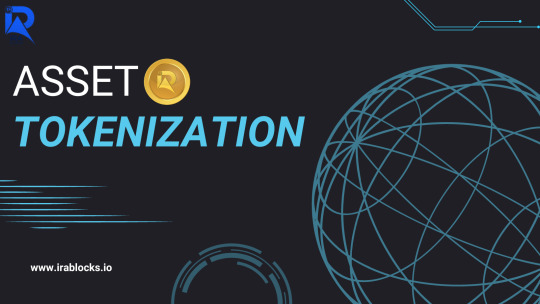
In an increasingly digital world, the concept of ownership and investment is undergoing a transformative shift. Asset tokenization emerges as a game-changer, revolutionizing the way we manage, trade, and engage with assets. From real estate to Aviation, Maritime tokenization is paving the way for a new era of accessibility, liquidity, and efficiency in managing digital assets.
Understanding Asset Tokenization:
Asset tokenization involves converting ownership rights of physical or digital assets into digital tokens that are recorded on a blockchain. These tokens represent fractional ownership, allowing investors to buy, sell, and trade portions of valuable assets seamlessly. The benefits are far-reaching, transcending industries and introducing a host of possibilities.
Democratizing Ownership:
Traditionally, owning high-value assets like real estate or other physical assets required substantial capital and access. Asset tokenization changes this narrative by enabling fractional ownership. Investors can now own fractions of valuable assets, expanding investment opportunities to a broader audience.
Enhancing Liquidity:
Illiquid assets, often challenging to sell quickly, become more liquid through tokenization. Fractional ownership allows for easier trading on secondary markets, opening the door to investors looking for flexibility in managing their investments.
Efficiency Through Automation:
Managing digital assets through tokenization offers automation through smart contracts. These self-executing contracts automate processes like dividend distribution, rental income sharing, and even voting rights among asset owners.
Security and Transparency:
Blockchain technology ensures transparency and security in asset ownership and transactions. The decentralized and immutable nature of the blockchain eliminates fraudulent activities and ensures that ownership records are tamper-proof.
Diversification and Accessibility:
Asset tokenization empowers investors to diversify their portfolios with ease. It's no longer necessary to have significant capital to invest in high-value assets. Instead, investors can allocate funds across a range of tokenized assets, reducing risk and enhancing investment strategies.
Future Possibilities:
As the digital landscape evolves, asset tokenization opens doors to innovative opportunities. The rise of non-fungible tokens (NFTs) showcases the potential of tokenization beyond traditional financial assets, allowing digital art, collectibles, and physical assets to be tokenized and traded.
Managing Digital Assets:
iRA Blocks, a pioneer in the field, provides a platform for efficient asset tokenization and management. With a focus on accessibility, liquidity, and security, iRA Blocks enables investors to participate in fractional ownership and manage digital assets seamlessly.
In conclusion, asset tokenization is transforming the way we perceive and manage ownership. It's not just about digitizing assets; it's about democratizing access, enhancing liquidity, and ushering in a new era of efficiency and innovation in the management of digital assets. As the digital revolution unfolds, asset tokenization stands at the forefront, redefining the landscape of investment and ownership.
2 notes
·
View notes
Text
A list of Automotive Engineering Service Companies in Germany

Bertrandt AG, https://www.bertrandt.com/. Bertrandt operates in digital engineering, physical engineering, and electrical systems/electronics segments. Its Designing function includes designing of all the elements of the automotive.
Alten Group, https://www.alten.com/. ALTEN Group supports the development strategy of its customers in the fields of innovation, R&D and technological information systems. Created 30 years ago, the Group has become a world leader in Engineering and Technology consulting. 24 700 highly qualified engineers carry out studies and conception projects for the Technical and Information Systems Divisions of major customers in the industrial, telecommunications and Service sectors.
L&T Technology Services Limited, https://www.ltts.com/. LTTS’ expertise in engineering design, product development, smart manufacturing, and digitalization touches every area of our lives — from the moment we wake up to when we go to bed. With 90 Innovation and R&D design centers globally, we specialize in disruptive technology spaces such as EACV, Med Tech, 5G, AI and Digital Products, Digital Manufacturing, and Sustainability.
FEV Group GmbH, https://www.fev.com/. FEV is into the design and development of internal combustion engines, conventional, electric, and alternative vehicle drive systems, energy technology, and a major supplier of advanced testing and instrumentation products and services to some of the world’s largest powertrain OEMs. Founded in 1978 by Prof. Franz Pischinger, today the company employs worldwide highly skilled research and development specialists on several continents.
Harman International, https://www.harman.com/. HARMAN designs and engineers connected products and solutions for automakers, consumers, and enterprises worldwide, including connected car systems, audio and visual products, enterprise automation solutions; and services supporting the Internet of Things.
EDAG Engineering GmbH, https://www.edag.com/de/. EDAG is into vehicle development, plant planning and construction, and process optimization.
HCL Technologies Limited, http://www.hcltech.com/. HCL Technologies Limited is an Indian multinational information technology services and consulting company headquartered in Noida. It emerged as an independent company in 1991 when HCL entered into the software services business. The company has offices in 52 countries and over 210,966 employees.
Cientra GmbH, https://www.cientra.com/. Cientra expertise across VLSI, ASIC, FPGA, SoC engineering, and IoT accelerate our delivery of customized solutions to the Consumer, Aviation, Semiconductors, Telecom, Wireless, and Automotive industries across their product lifecycle.
Akka Technologies, https://www.akka-technologies.com/. AKKA supports the world’s leading industry players in their digital transformation and throughout their entire product life cycle.
IAV GmbHb, https://www.iav.com/en/. IAV develops the mobility of the future. Regardless of the specific manufacturer, our engineering proves itself in vehicles and technologies all over the world.
Altran Technologies, https://www.altran.com/in/en/. Altran expertise from strategy and design to managing operations in the fields of cloud, data artificial intelligence, connectivity, software, digital engineering, and platforms.
Capgemini Engineering, https://capgemini-engineering.com/de/de/. Capgemini Engineering is a technology and innovation consultancy across sectors including Aeronautics, Space, Defense, Naval, Automotive, Rail, Infrastructure & Transportation, Energy, Utilities & Chemicals, Life Sciences, Communications, Semiconductor & Electronics, Industrial & Consumer, Software & Internet.
2 notes
·
View notes
Text
Graphic design is a profession, academic discipline5 and applied art whose activity consists in projecting visual communications intended to transmit specific messages to social groups, with specific objectives.Graphic design is an interdisciplinary branch of design[1] and of the fine arts. Its practice involves creativity, innovation and lateral thinking using manual or digital tools, where it is usual to use text and graphics to communicate visually.
The role of the graphic designer in the communication process is that of encoder or interpreter of the message. They work on the interpretation, ordering, and presentation of visual messages. Usually, graphic design uses the aesthetics of typography and the compositional arrangement of the text, ornamentation, and imagery to convey ideas, feelings, and attitudes beyond what language alone expresses. The design work can be based on a customer's demand, a demand that ends up being established linguistically, either orally or in writing, that is, that graphic design transforms a linguistic message into a graphic manifestation.
Graphic design has, as a field of application, different areas of knowledge focused on any visual communication system. For example, it can be applied in advertising strategies, or it can also be applied in the aviation world or space exploration. In this sense, in some countries graphic design is related as only associated with the production of sketches and drawings, this is incorrect, since visual communication is a small part of a huge range of types and classes where it can be applied.
With origins in antiquity and the Middle Ages graphic design as applied art was initially linked to the boom of rise of printing in Europe in the 15th century and the growth of consumer culture in the industrial revolution. From there it emerged as a distinct profession in the West, closely associated with advertising in the 19th century and its evolution allowed its consolidation in the 20th century. Given the rapid and massive growth in information exchange today, the demand for experienced designers is greater than ever, particularly because of the development of new technologies and the need to pay attention to human factors beyond the competence of the engineers who develop them.
2 notes
·
View notes
Photo



Seattle-Tacoma explores ChatGPT use cases: “Conversational AI will be a differentiator for early adopters”
Matt Breed, Chief Information Officer, shares how Seattle-Tacoma International Airport has used ChatGPT, along with the potential for Artificial Intelligence and Machine Learning to improve at an exponential rate. Conversational AI is undoubtedly a hot topic right now and features in FTE’s 10 technology trends that can enhance airline and airport operations in 2023. 2022 […]
1 note
·
View note
Text
Building the Next Generation of Leaders: How Arab CIOs are Mentoring Future Talent?
In today’s rapidly evolving digital landscape, the role of Chief Information Officers (CIOs) is more critical than ever. As leaders responsible for driving technological innovation and digital transformation within organizations, CIOs play a pivotal role in shaping the future of business. In the Arab world, CIOs are not only focused on leading their organizations through technological advancements but also on nurturing the next generation of leaders in the field. Through mentorship and guidance, Arab CIOs are empowering future talent, fostering innovation, and building a strong foundation for the region’s digital future.
The Importance of Mentorship in Leadership Development:
Mentorship plays a crucial role in leadership development, providing aspiring professionals with guidance, support, and valuable insights from experienced leaders. For CIOs in the Arab world, mentoring future talent is not just about transferring knowledge and skills but also about instilling values, fostering creativity, and nurturing a culture of continuous learning and growth.
By serving as mentors, Arab CIOs can share their experiences, lessons learned, and best practices with emerging leaders, helping them navigate the complexities of the tech industry and develop the skills needed to succeed in leadership roles. Mentorship also enables CIOs to identify and groom high-potential talent within their organizations, ensuring a pipeline of capable leaders to drive future growth and innovation.
Challenges and Opportunities in Arab CIO Mentorship Programs:
While mentorship programs offer significant benefits, they also present challenges, particularly in the Arab world where cultural norms and organizational dynamics may impact the effectiveness of such initiatives. One of the key challenges faced by Arab CIOs is the need to balance traditional hierarchical structures with the principles of mentorship, which emphasize collaboration, open communication, and mutual respect.
Additionally, cultural factors such as gender segregation and hierarchical norms may limit opportunities for mentorship, particularly for female professionals aspiring to leadership roles in male-dominated industries like technology. Overcoming these challenges requires a concerted effort to promote diversity and inclusion, create supportive mentorship environments, and address cultural barriers that may hinder participation.
Despite these challenges, Arab CIOs are leveraging mentorship programs as a strategic tool for talent development and leadership succession planning. Many organizations in the region have implemented formal mentorship initiatives, pairing experienced CIOs with emerging talent to provide guidance, support, and career development opportunities.
Case Studies: Successful Mentorship Initiatives by Arab CIOs:
Emirates Group: The Emirates Group, one of the leading aviation and travel conglomerates in the Arab world, has implemented a comprehensive mentorship program for its IT professionals. Senior CIOs within the organization mentor junior staff members, providing them with opportunities to learn from seasoned leaders, gain exposure to cutting-edge technologies, and develop leadership skills. The program has not only helped groom future CIOs within the organization but has also contributed to a culture of collaboration and innovation across the IT department.
Saudi Aramco: As the world’s largest oil producer, Saudi Aramco recognizes the importance of investing in talent development to drive digital transformation and innovation. The company’s CIO mentorship program pairs aspiring IT professionals with senior leaders in the organization, offering them guidance, support, and exposure to real-world challenges and opportunities. Through this program, Saudi Aramco is nurturing a new generation of IT leaders who are equipped to lead the company into the future.
Qatar Airways: Qatar Airways, one of the fastest-growing airlines in the world, has established a mentorship program for women in technology, aimed at promoting gender diversity and empowering female leaders in the field. Female CIOs within the organization mentor junior female IT professionals, providing them with tailored support and guidance to help them advance in their careers. The program has been instrumental in breaking down barriers and creating opportunities for women in technology at Qatar Airways.
Best Practices for Effective Mentorship:
To ensure the success of mentorship initiatives, Arab CIOs can adopt several best practices:
Establish Clear Objectives: Define clear objectives and expectations for the mentorship program, outlining the roles and responsibilities of both mentors and mentees.
Create a Supportive Environment: Foster a supportive and inclusive environment where mentees feel comfortable seeking guidance and sharing their challenges and aspirations.
Promote Diversity and Inclusion: Encourage diversity and inclusion in mentorship pairings, ensuring representation across gender, ethnicity, and background to promote diverse perspectives and experiences.
Provide Ongoing Feedback: Regularly evaluate the progress of mentorship relationships and provide constructive feedback to mentors and mentees to facilitate growth and development.
Encourage Continuous Learning: Encourage mentees to take ownership of their professional development and pursue opportunities for continuous learning and skill development.
Lead by Example: Set a positive example as a mentor by demonstrating leadership qualities, ethical behavior, and a commitment to excellence in all aspects of your work.
Conclusion:
Arab CIOs play a critical role not only in driving technological innovation within their organizations but also in mentoring future talent and shaping the next generation of leaders in the tech industry. Through mentorship programs, CIOs are empowering aspiring professionals, fostering innovation, and building a strong foundation for the region’s digital future. By adopting best practices and fostering a culture of mentorship and continuous learning, Arab CIOs can ensure that the next generation of leaders is well-equipped to navigate the complexities of the digital landscape and drive sustainable growth and innovation in the Arab world.
0 notes